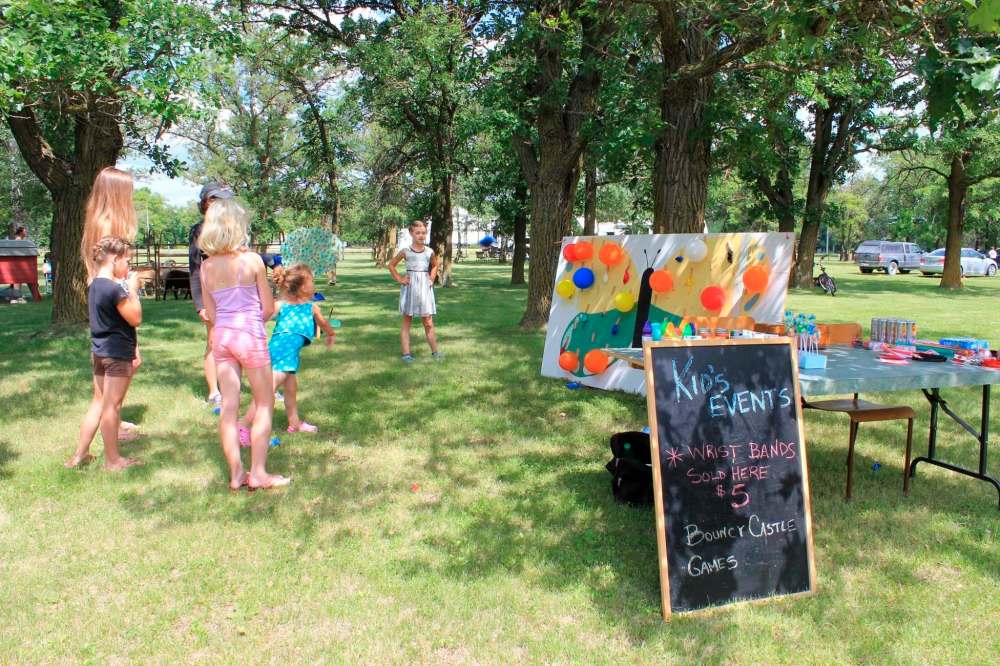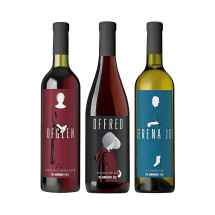Gardenton offers visitors a look back in time Learn about the food, land and culture of Manitoba's Ukrainian settlers
Read this article for free:
or
Already have an account? Log in here »
To continue reading, please subscribe:
Monthly Digital Subscription
$0 for the first 4 weeks*
- Enjoy unlimited reading on winnipegfreepress.com
- Read the E-Edition, our digital replica newspaper
- Access News Break, our award-winning app
- Play interactive puzzles
*No charge for 4 weeks then price increases to the regular rate of $19.00 plus GST every four weeks. Offer available to new and qualified returning subscribers only. Cancel any time.
Monthly Digital Subscription
$4.75/week*
- Enjoy unlimited reading on winnipegfreepress.com
- Read the E-Edition, our digital replica newspaper
- Access News Break, our award-winning app
- Play interactive puzzles
*Billed as $19 plus GST every four weeks. Cancel any time.
To continue reading, please subscribe:
Add Free Press access to your Brandon Sun subscription for only an additional
$1 for the first 4 weeks*
*Your next subscription payment will increase by $1.00 and you will be charged $16.99 plus GST for four weeks. After four weeks, your payment will increase to $23.99 plus GST every four weeks.
Read unlimited articles for free today:
or
Already have an account? Log in here »
Hey there, time traveller!
This article was published 12/07/2018 (2707 days ago), so information in it may no longer be current.
There are two ways to tap into your “inner Slav” this summer. Tie that babushka under your chin, grab your red boots and the kids and come out this weekend to the annual Ukrainian Festival in Gardenton, about 110 kilometres south of Winnipeg via Highway 59.
And if you can’t make it this weekend, there are the Gardenton Cultural Tours scheduled for Aug. 16 and 25.
EVENT PREVIEW
Ukrainian Festival
Gardenton Park and Museum, Provincial Road 209, Gardenton
● gardentonpark.com
● Admission at the gate: $10/adult. Kids 12 and under: Free.
● Dinner & Dance at 7 p.m.: $15 (hot perogy and sausages, dance music by the Starlites).
Ukrainian Festival
Gardenton Park and Museum, Provincial Road 209, Gardenton
● gardentonpark.com
● Admission at the gate: $10/adult. Kids 12 and under: Free.
● Dinner & Dance at 7 p.m.: $15 (hot perogy and sausages, dance music by the Starlites).To sign up for the Gardenton Cultural Tour: download the brochure PDF.
Cost is $32 per person. Minimum group size is 10. Register one week prior to your planned date. If you don’t have 10 people, buddy up with others on Thursday, Aug. 16 or Saturday, Aug. 25.
Outdoor portion is a 1.6-kilometre loop with even terrain, but can be shortened for those with limited mobility/stamina. Be prepared for all weather. Tour can proceed in rain. Parts of the trail may be wet and is not designed to be wheelchair-accessible.
Tour includes lunch, tour of St. Michael’s Church, the Ukrainian Museum and Village and the outdoor tour.
Either way, you’ll get a taste of the food, the land, the history and the culture of Manitoba’s Ukrainian settlers.
The Gardenton Ukrainian Festival takes place Saturday, kicking off at 10:30 a.m. with a traditional Ukrainian service at St. Michael’s Ukrainian Orthodox Church. Spend the rest of the day enjoying traditional Ukrainian fare including perogies, cabbage rolls and borscht. Drop a few bucks at the vendors market and the Ukrainian Village Gift Shop, but note that all parts of the event are cash only.
There’s lots to do for the kids: horse-drawn wagon rides, games, petting zoo, train rides, and everyone can thrill to the excitement of traditional Ukrainian dances performed by Winnipeg’s Zoloto Ukrainian Dance Ensemble and Company, the Susydka Ukrainian Dance Club of Vita and Selo Ukrainian Dancers of Anola, with music by fiddlers Zenon Horobec and Jayden Hryniuk, and singers from the Morden Ukrainian Community.
To really understand all the reasons to celebrate this community though, you need to know a little about the unique history of the pioneers who arrived there.
Two members of the Gardenton community — Laura Reeves, a trained botanist and owner of Prairie Shore Botanicals, speaking on behalf of the Ukrainian Museum and Village Society (UMVS), and Don Machnee, chairman of the Friends of Historic St. Michael’s Ukrainian Orthodox Church committee — shared the history and happenings that make Gardenton a go-to as a day-trip destination this summer.
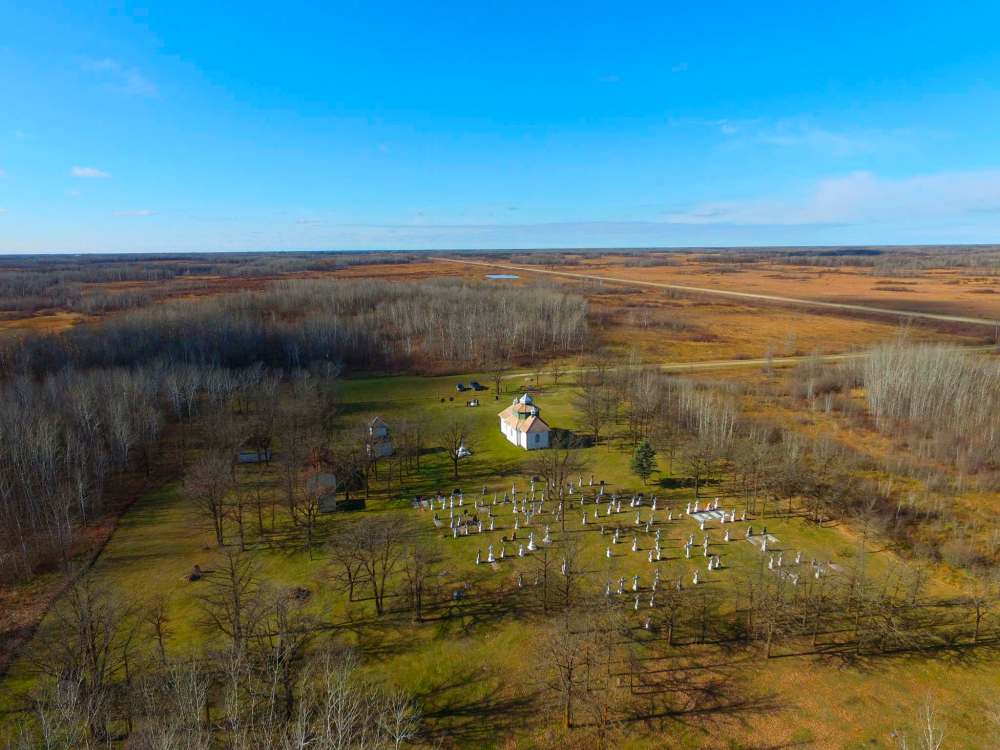
Winnipeg Free Press: Laura, what is your role with the museum and the tour?
Laura Reeves: I became involved with the UMVS as a volunteer perogy maker shortly after I moved here in 1995. I’ve been on the board for about four years. I was a botanist for the Manitoba Tall Grass Prairie Preserve (for 18 years), where part of my job was to was to identify all of the plants in the area. In 2012, I started my own business here, Prairie Shore Botanicals. I run workshops in wild edibles, wilderness skills and natural basketry. I also offer private land consults to people who are curious about the plants growing on their own property. I lead the outdoor part of the tour.
A few years ago, I proposed teaming up with the UMVS and Historic St. Michael’s Ukrainian Orthodox Church to create a tour package so that visitors to the area could see all three attractions at once.
WFP: Can you share a little about the Ukrainian museum?
Reeves: The Gardenton Ukrainian Museum was started in 1965. It is unique in that it features the history of the first Ukrainian pioneers in southeastern Manitoba and was organized by the earliest pioneers and their descendants. It’s the only one of its kind in Manitoba because it features artifacts from the earliest Ukrainian pioneers who settled here.

WFP: What will visitors see there?
Reeves: The museum features many hand tools, including some brought from the old country and some that were improvised from materials at hand. Some of the articles of clothing were brought over by the pioneers while some were made here during the period of 1896 to approximately 1920.
WFP: Tell us a little about the first settlers.
Reeves: The first Ukrainians arrived in 1896. When local immigration officials were looking for agriculturalists to settle in Manitoba, it only made sense to go to the breadbasket of the world — Ukraine — where many people were eager to leave and start a new life elsewhere.
The Ukrainians in this area formed a unique block settlement not found anywhere else in Canada. Families formed four-cornered settlements — building their farm sites at the centre of sections of land so that they could be close to each other to lend a hand and share resources.
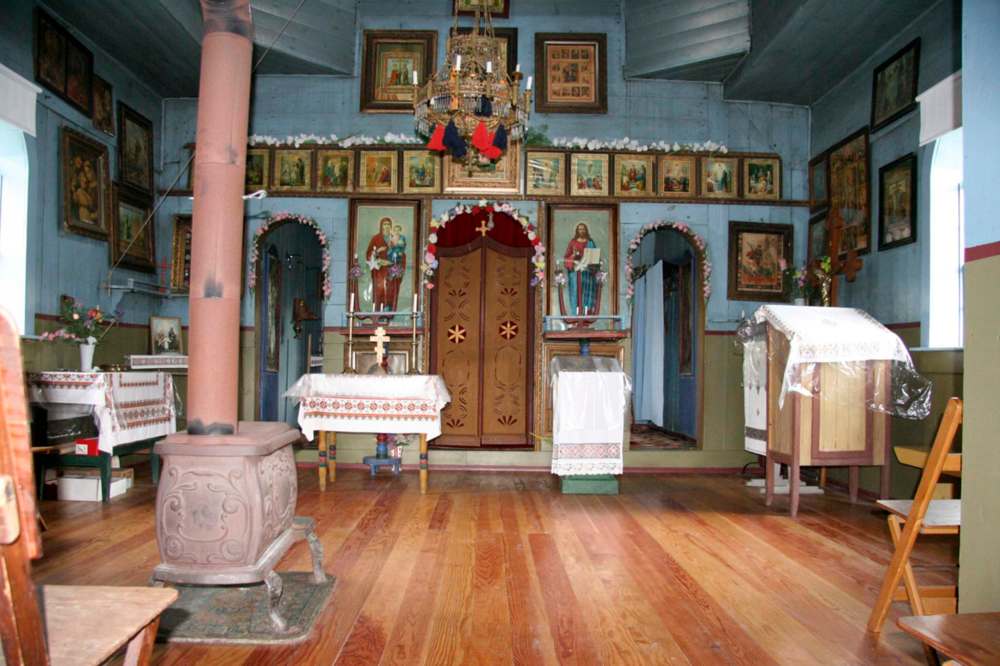
WFP: As part of the cultural tour, you are taking guests through the local terrain. How does the local flora tie in with the success/survival of the settlers?
Reeves: Having few financial means (some arrived with less than $100 in their pockets), the first settlers made the most of what the land had to offer — trees for firewood and building materials, slough grass for their roofs, seneca snakeroot and frogs as a source of income.
Farming the land here was difficult because of the extensive wetlands and large stones left behind by retreating glaciers. Because the land here is so difficult to farm, very little of it was broken. Many of the men left their wives alone with their children for months at a time while they sought work outside of the Stuartburn area.
Many settlers or their descendants moved away, leaving large tracts of land in its original state. This area became the prime location for a tall grass prairie preserve. (Tall grass prairie is an endangered ecosystem, with less than half of one per cent remaining in North America. The Manitoba Tall Grass Prairie Preserve is the largest of its kind in Canada and is home to more than 30 species of rare, threatened and endangered species.)
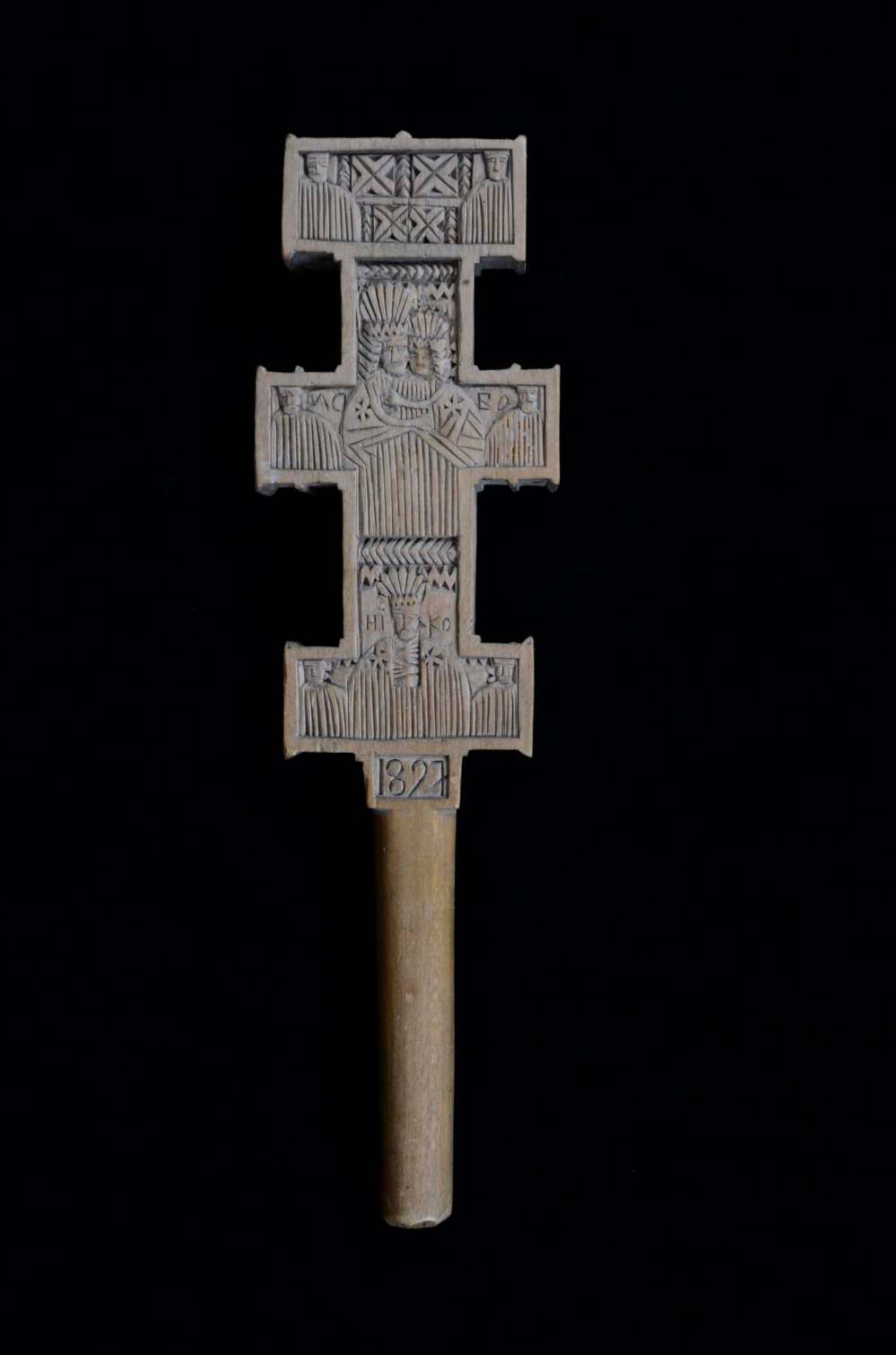
WFP: Why include the surrounding land as part of a cultural tour?
Reeves: Culture is very tightly connected to the land, and by combining these three attractions as a package deal, people get the whole story — from both the natural and cultural history perspectives.
What we have in this area is rather unique. Because the land was left in virtually pristine condition, visitors have a rare opportunity to see how the artifacts in the museum relate to the settlers’ experience on the land. We can see what the settlers saw when they first arrived and why they were eager to settle here. And then we can see, first-hand, why life was a struggle.
The beauty and splendour of the land remains for everyone to enjoy — we don’t have to imagine it based on something we read or were told; we can see, hear, smell and feel the land as the first settlers did.
WFP: Don, what is your role at the church and with the tour?
Don Machnee: I’m the chair of the Friends of Historic St. Michael’s Ukrainian Orthodox Church committee. Some of the committee members are direct descendants of the church builders and organizers while others have a keen interest in heritage and historic sites. Friends are charged with the repair and maintenance of this site.

WFP: Can you share just a little about the church and its role in the community? What will visitors want to be sure to see?
DM: The site for the church was chosen because a passing immigrant family stopped to rest with a sick child. The child passed away and was buried where the current cemetery is situated.
Church construction began on Nov. 21, 1897 and was completed in May of 1899. It was consecrated on Oct. 14, 1899. Forty-four builder families participated in its construction. A bell tower was built in 1906.
The church has the design of a cross and is of Eastern Byzantine domed style. In the interior, icons cover all the walls which were brought to Canada from Ukraine by the pioneers. There are hand-carved iconostas, processional crosses, candelabras and small hand crosses.
An indicator as how important the church and religion was to these Ukrainian immigrants is that they were in Canada for less than a year and they were building churches.
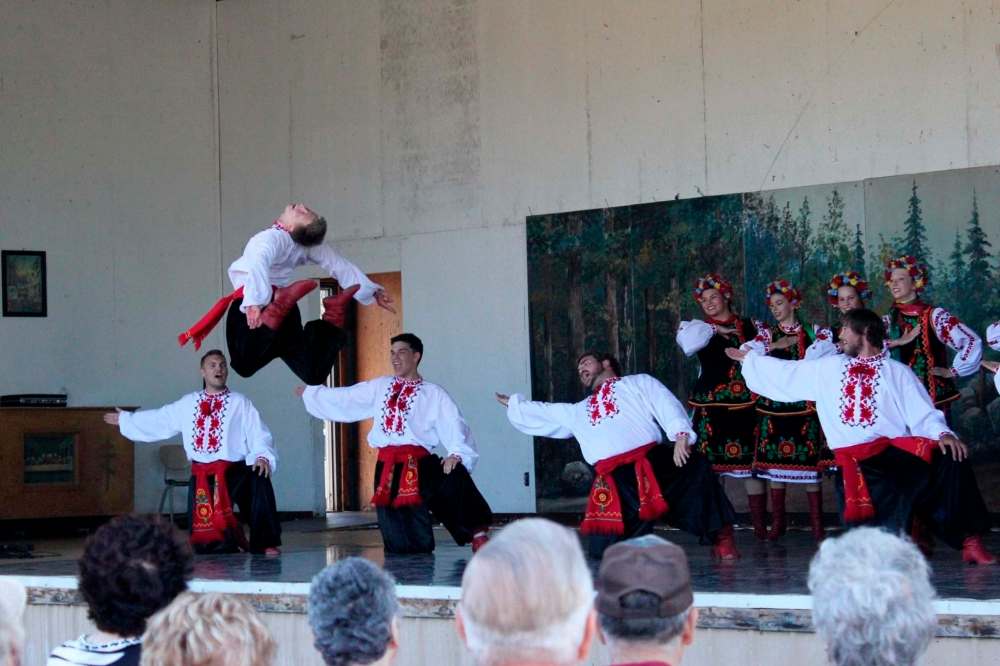
Twitter: @WendyKinginWpg

